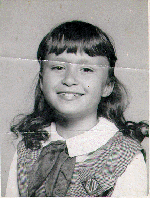Answers From the American Robin Expert
Teaching Suggestions
Special thanks to ornithologist Laura Erickson for providing her time and expertise in responding to your questions.
 From:
NEW YORK
From:
NEW YORKElmwood Franklin School
rgardon@efs.pvt.k12.ny.us
Q. One first grader observed one robin singing in a tree and another circling around the tree chirping. Why would they do this?
A. It always makes me happy when students are careful observers!! The robin singing in the tree must have been a male, since it was singing. If the one circling the tree was a male, he must have thought the tree belonged in HIS territory and was trying to make the other robin fly away.
If the one circling was a female, it was probably the robin's mate. From your description, it sounds like it was agitated. I bet there wasn't a predator around, or the male would have stopped singing. She might have been frustrated at not finding a good nest spot, or she might have spotted another female in the tree, or might just have wanted to take a flight around her block! It would be interesting to use a stopwatch to time this kind of behavior, and see what she does next.
From: NEW YORK
John F. Kennedy Elementary School
pboyle@ogdensburg.neric.org
Q. Hi, my name is Erica Kelso. One year there was a family of robins in my tree. My dog Lady had killed the parent robins and we saved the babies. One of the robins comes back every year do you know why Chirp (the robin) comes back?
A. Hello, Erica! Chirp comes back because your yard is Chirp's home. Chirp knows all the best feeding and hiding places now, and trusts you. (I hope Lady knows now to leave robins alone!!) If robins do well in an area, they often return every year.
Chirp's brothers and sisters that you raised might also have wanted to come back to your yard, but Chirp was the dominant one--the one who could boss around the others--and robins are territorial when they grow up so they won't share their nesting home with their brothers and sisters or any other robins except their mate. Is Chirp a male or female? Does he or she find a mate every year?
 From:
OHIO
From:
OHIOPymatuning Valley Middle School
wvoelker@excite.com
Q. We would like to know how many grams/ounces of food robins eat a day. Thank you Racheal, Aaryona, Nicole, and Autumn
A. Parent robins with nestlings spend more time each day hunting for food than at any other time in their lives. The two adults bring about 200 grams of food per day to the nest as the babies get close to fledging, so the babies are taking in about 50 grams each day. During this time, the robins are each finding more than 100 grams of food each, because they are eating some of it themselves.
It is hard to find exact figures on how many grams per day adult robins eat, but it is probably fairly close to or even more than 50 grams. Their food items--earthworms, soft-bodied insects, and berries--have a high water content, so a lot of what they eat doesn't provide many usable calories. A normal-sized adult robin needs about 40 calories a day.
 From:
WISCONSIN
From:
WISCONSINPlatteville
upton@platteville.k12.wi.us
Q. We are aware of the darker richer color that the male robin species has compared to the female, however we have also heard the female has more white color plumage than males. Is this true? What are the best ways to distinguish male from female robins?
A. The throat area of robins is white with blackish streaks, and the eye has tiny white crescents above and below. These marks are a bit more pronounced in the male than the female. She is overall paler, especially noticeably in the head. In some areas she is more brownish black than dark grayish black. But there is a LOT of variation among robins from different areas. The best way is to carefully study the robins in your own back yard or the area around school. If you pay close attention, you'll notice that one is brighter than the other, and you can be certain that one is the male.
Some robins have white patches on their bodies. These birds are partial albinos. Sometimes when a bird gets an injury, new feathers in that area grow in white. But as robins get older, they are more likely to grow more of these white feathers, especially around their heads, even where they've never been hurt. And sometimes a robin is a partial albino from the time it grows its first feathers, and no one knows why those parts of its body don't produce normal pigments. Either males or females can be a partial albino.
- Click here to learn more about Laura, the wonderful books she's written, and much more information "For the Birds".
Laura Erickson
Journey North Science Writer


